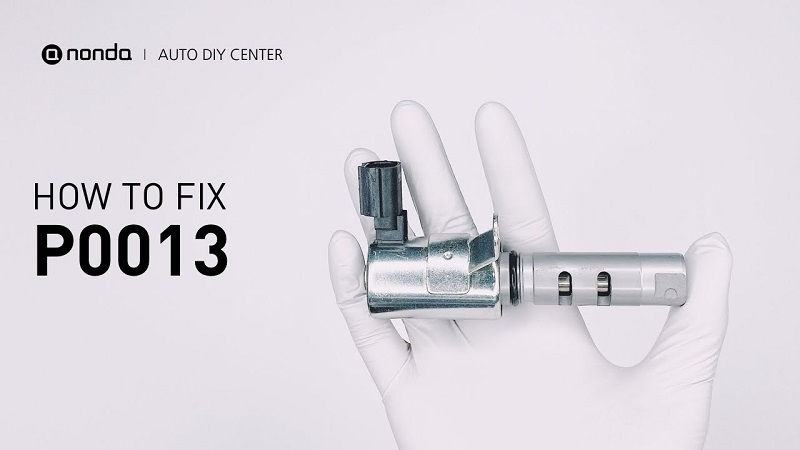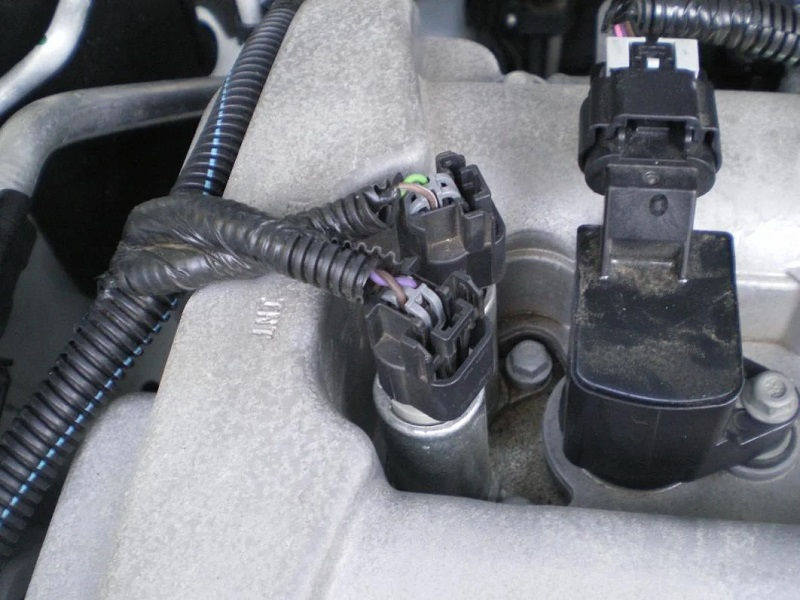This post contains affiliate links. This means I will make a commission at no extra cost to you should you click through and make a purchase [ “As an Amazon Associate, I earn from qualifying purchases.” ]. Read the full disclosure here.
Demystifying the P0013 Code: Understanding the “B” Camshaft Position Actuator Circuit Issue GuideMechanic.Com In the intricate world of automotive diagnostics, the emergence of a P0013 trouble code can send shivers down the spine of any vehicle owner.
Often accompanied by the dreaded check engine light, the P0013 code specifically pertains to the “B” Camshaft Position Actuator Circuit on Bank 1.
While it may sound like a technical jargon reserved for mechanics, understanding this code is crucial for maintaining the health and performance of your vehicle.
See Also: P0011 Code “A” Camshaft Position – Timing Over-Advanced or System Performance (Bank 1)
What is the P0013 Code?

The P0013 trouble code is part of the On-Board Diagnostics II (OBD-II) system, which monitors various components of a vehicle’s engine and emission systems. Specifically, P0013 indicates an issue with the “B” Camshaft Position Actuator Circuit on Bank 1.
Decoding the Terminology:
Camshaft Position Actuator:
This component is responsible for controlling the timing of the engine’s valves by adjusting the camshaft’s position relative to the crankshaft. It ensures optimal engine performance and efficiency.
Bank 1:
Modern engines, especially those with multiple cylinders, are divided into banks. Bank 1 typically refers to the side of the engine where the cylinder number 1 is located. In inline engines, there is only one bank.
“B” Camshaft:
In engines with dual overhead camshafts (DOHC), there are usually two camshafts per bank: one for intake valves (A) and one for exhaust valves (B). The “B” camshaft is the one responsible for controlling the exhaust valves.
P0013 Code “B” Camshaft Position – Actuator Circuit (Bank 1)
Common Symptoms:

When a vehicle triggers the P0013 code, it may exhibit various symptoms, including:
Check Engine Light:
The most obvious indication of a problem, the check engine light illuminates to alert the driver of a potential issue.
Poor Engine Performance:
Drivers may notice a decrease in engine power, rough idling, or difficulty starting the vehicle.
Reduced Fuel Efficiency:
A malfunctioning camshaft position actuator can lead to inefficient combustion, resulting in decreased fuel economy.
Engine Misfires:
Irregularities in the camshaft’s timing can cause misfires, leading to a noticeable decrease in engine smoothness.
Causes of the P0013 Code:

Several factors can contribute to the triggering of the P0013 code, including:
Faulty Camshaft Position Actuator: Over time, these components can wear out or become damaged, leading to improper operation.
Oil Flow Issues:
The camshaft position actuator relies on sufficient oil pressure to function correctly. Low oil levels or dirty oil can impede proper operation.
Wiring or Connector Problems:
Damage to the wiring harness or connectors associated with the camshaft position actuator circuit can disrupt the electrical signals, triggering the code.
Timing Chain or Belt Issues:
A stretched or improperly tensioned timing chain or belt can affect the camshaft’s timing, leading to code P0013.
P0013 Code “B” Camshaft Position – Actuator Circuit (Bank 1)
Diagnostic Process:

Resolving the P0013 code typically involves a systematic diagnostic approach:
Code Scanning:
Using an OBD-II scanner, the vehicle’s onboard computer is accessed to retrieve the trouble codes. P0013 will be among the codes displayed.
Visual Inspection:
A thorough visual inspection of the camshaft position actuator, wiring, and connectors is conducted to identify any visible signs of damage or wear.
Testing the Actuator:
The camshaft position actuator is tested using a multimeter or diagnostic tool to ensure it is receiving the proper voltage and functioning correctly.
Checking Oil Levels:
Inspecting the engine’s oil level and condition is essential, as low oil levels or dirty oil can contribute to actuator malfunctions.
Timing Chain/Belt Inspection:
If no other issues are found, a closer examination of the timing chain or belt may be necessary to ensure proper tension and alignment.
Repair Options:

Once the root cause of the P0013 code is identified, repairs can be undertaken accordingly:
- Replacing the Camshaft Position Actuator: If the actuator is found to be faulty, it will need to be replaced with a new one.
- Repairing Wiring/Connectors: Damaged wiring or connectors should be repaired or replaced to restore proper electrical connections.
- Addressing Oil Issues: Ensuring the engine has adequate oil levels and changing the oil if necessary can help resolve oil-related problems.
- Timing Chain/Belt Replacement: If the timing chain or belt is identified as the issue, it may need to be replaced or adjusted to correct the timing.
P0013 Code “B” Camshaft Position – Actuator Circuit (Bank 1)
Preventative Maintenance:
Check out this Valvoline High Mileage with MaxLife Technology SAE 10W-30 Synthetic Blend Motor Oil 5 QT

To minimize the likelihood of encountering the P0013 code and similar issues in the future, regular preventative maintenance is key:
Follow Manufacturer Recommendations:
Adhering to the manufacturer’s recommended maintenance schedule, including oil changes and inspections, can help prevent premature wear and tear on engine components.
Use High-Quality Oil:
Using high-quality engine oil and adhering to the recommended oil change intervals can help maintain proper lubrication and extend the life of engine components.
Address Warning Signs Promptly:
If you notice any unusual symptoms such as engine performance issues or warning lights, have your vehicle inspected by a qualified mechanic promptly to prevent further damage.
Conclusion:
While the P0013 code may initially seem daunting, understanding its causes and implications can empower vehicle owners to address the issue effectively.
By following a systematic diagnostic process and undertaking necessary repairs, drivers can restore their vehicle’s performance and reliability.
Additionally, practicing regular maintenance and addressing warning signs promptly can help prevent similar issues from arising in the future, ensuring a smoother and more enjoyable driving experience.
See Also: P0012 Code “A” Camshaft Position – Timing Over-Retarded (Bank 1)
- Ford Focus Catalytic Converter Replacement Cost - April 27, 2025
- 2011 Honda CR-V Catalytic Converter Replacement Cost - April 27, 2025
- 2005 Toyota Camry Catalytic Converter Replacement Cost - April 27, 2025
